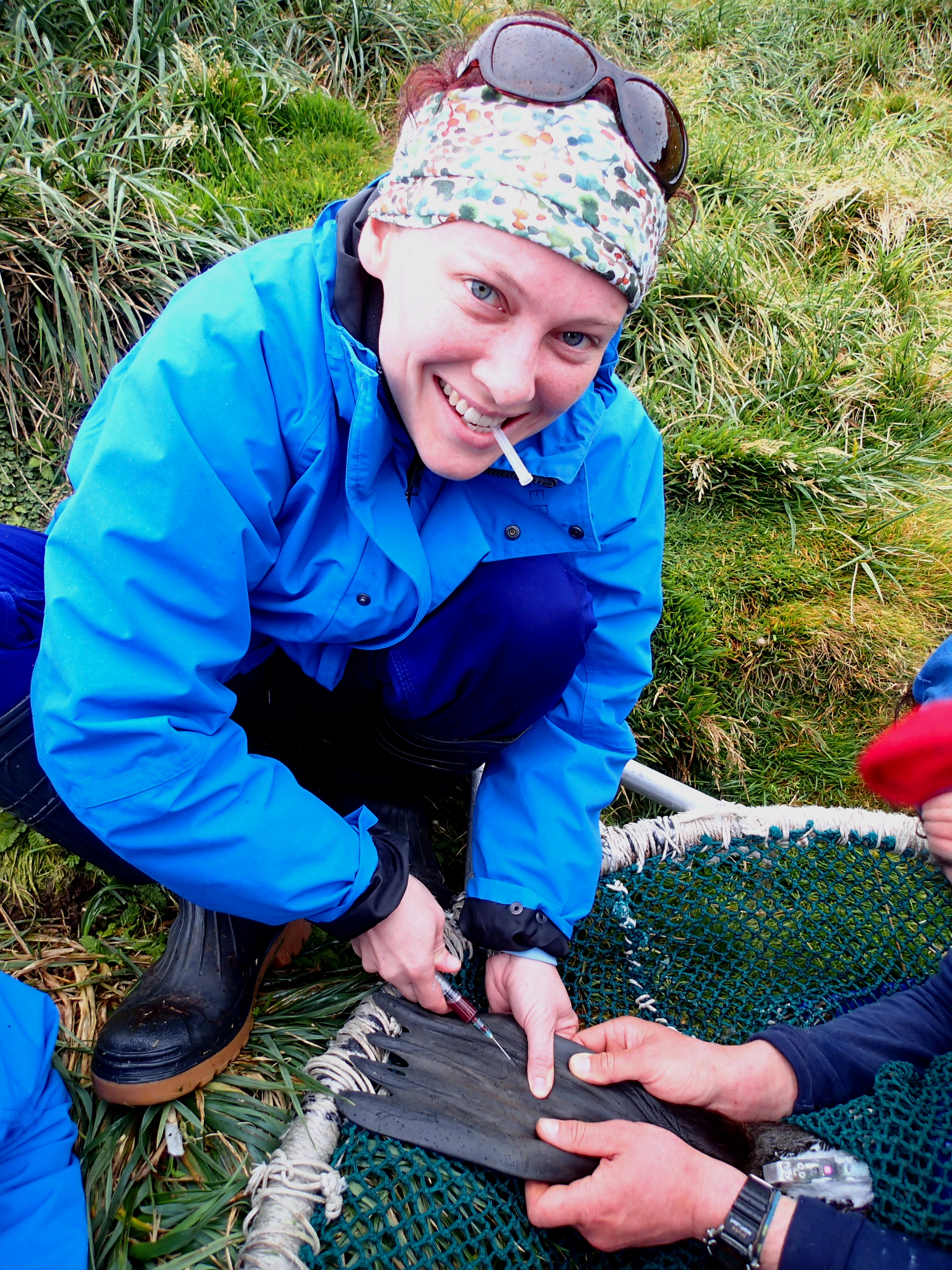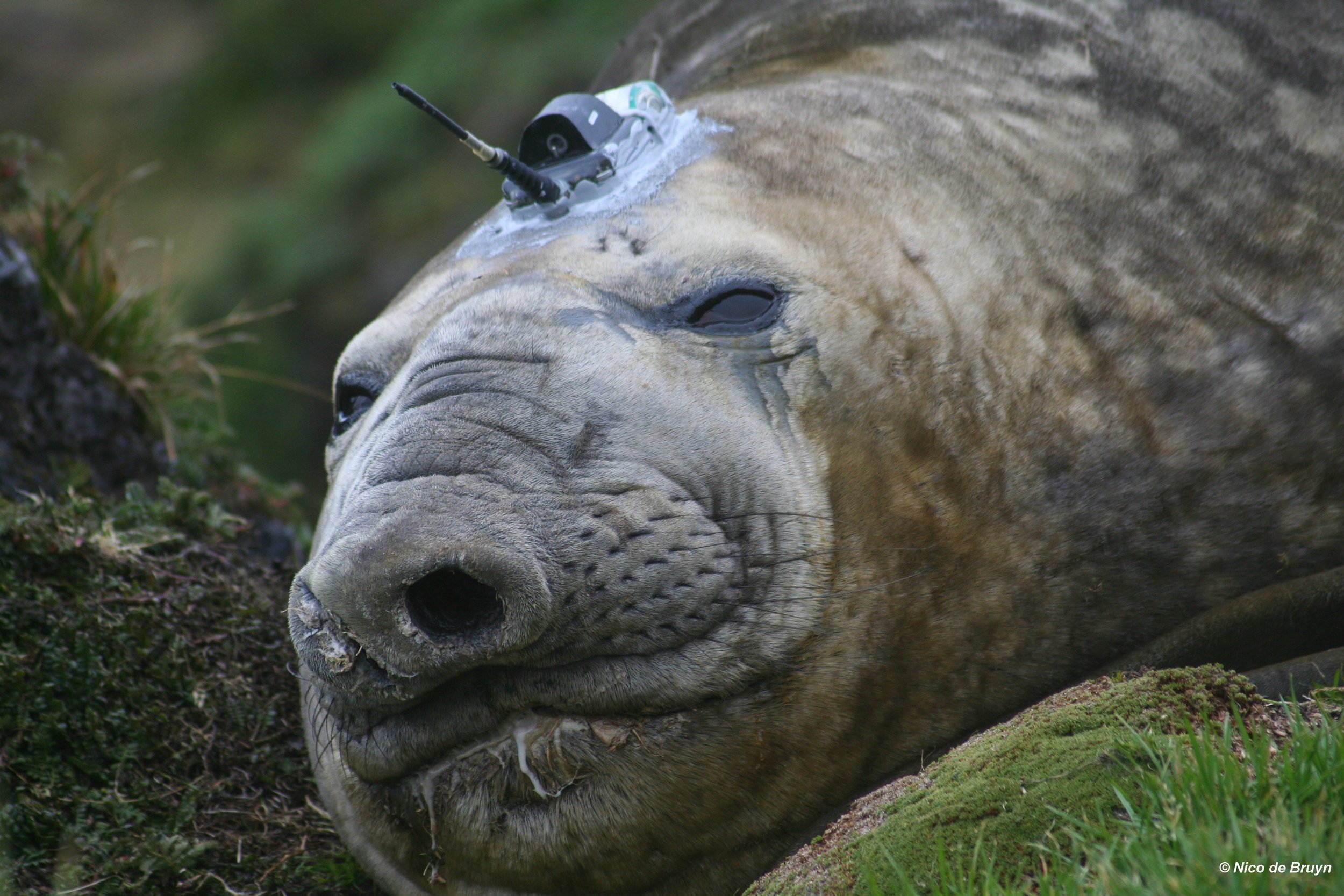A pretty interesting looking shark washed up on Marion Island's shore! Reported on in the just published... Marine Biodiversity Records
Introducing the 2015/16 Marion Island SEAL AND KILLER WHALE field personnel
/The 2015 5-week Relief voyage (Takeover) ended a couple of weeks ago, with the SA Agulhas II bringing home the 2014/2015 killer whale and seal field personnel, as well as the Principal Investigator and colleagues. The latter mentioned assisted with debriefing of the returning field personnel and training of the 'newbies'.
The 'new' killer whale and seal field scientists for the 2015/16 thirteen-month long expedition to Marion Island are almost entering their second month alone since the ship departed with all the Takeover - and previous expedition team members.
THE MARION ISLAND 72ND EXPEDITION (2015/16) SEALERS AND KILLER WHALERS; LEFT TO RIGHT: JOHN DICKENS, BENOIT MORKEL, MICHAEL MOLE
Official Youtube video of seal-penguin sexual behaviour
/Featuring some exclusive video footage of Antarctic fur seals mating with king penguins including an interview with Dr Nico de Bruyn discussing these events. Originally published by this group in the journal Polar Biology
Marion fur seals featured on BBC... again!
/Marion's Antarctic fur seals are sexually harassing king penguins.... again! Check out the latest feature in BBC EARTH:
http://www.bbc.com/earth/story/20141117-why-seals-have-sex-with-penguins
....regarding our latest paper in Polar Biology: http://link.springer.com/article/10.1007/s00300-014-1618-3
This follows on an initial paper in 2008 reporting on the first such observed case in 2006:
http://link.springer.com/article/10.1007%2Fs10164-007-0073-9#page-1 , which also caused somewhat of a media storm.
The Effect of Satellite Tagging and Biopsy Sampling on Killer Whales
/Satellite Tagging and Biopsy Sampling of Killer Whales at Subantarctic Marion Island: Effectiveness, Immediate Reactions and Long-Term Responses
PLOS ONE 9(11): e111835
Cetaceans spend the vast majority of their lives under water and are highly mobile and often wide-ranging, which makes them a challenging taxon to study. Two field methods – tissue biopsy sampling and satellite-linked telemetry (or satellite tagging) – are becoming widely used in cetacean studies because they allow the collection of data which are difficult or impossible to obtain by other means. Tissues obtained by biopsy sampling can be used for a range of analyses including genetics, stable isotopes, fatty acids, contaminants, hormones and trace elements and can so address aspects such as population structure, diet and animal health. Satellite tagging can elucidate the movement, distribution, behaviour and habitat use of cetaceans in relation to their physical environment. Such data are critical to understanding the ecology of a species and its environmental role and, consequently, are vital to conservation or management efforts. The need for such information is particularly acute given the anthropogenic pressures many such populations and species face.
However, researchers must carefully consider their methods not only from an animal welfare perspective, but also to ensure the scientific rigour and validity of their results. The latter point is critical where methods may affect the subsequent behaviour or performance of individuals, thereby biasing the results obtained. From an ethical perspective researchers have an onus to assess the tradeoffs between the ‘importance’ of research, its likely benefit and its effect on animals before conducting work; from a scientific perspective the responsibility is to design robust and valid studies. Researchers should further evaluate animal effects and research methods post-hoc, refine these where needed and, importantly, publish such results.
We have been satellite tagging and biopsy sampling killer whales at Marion Island since 2011 and in our new paper in PLOS ONE we looked at the immediate reactions of the animals to being tagged or sampled and whether killer whales showed any longer term responses.
We never observed severe reactions to tagging or biopsy sampling, there was typically no observable reaction or a flinch, shake of the body, some acceleration and/or an immediate dive. We analysed individual sighting histories over several years, and we could detect no significant mid- (1 month) or long-term (<24 months) changes in killer whale occurrence where we tagged and biopsy sampled.
However, we will continue long-term monitoring of individuals after biopsy sampling and tagging to provide continuous assessment of potential impacts on the study animals. We recommend that such monitoring should be implemented in other studies where animals are biopsied or tagged, especially considering the increased use of these methods.
Read the full paper in PLOS ONE:
http://dx.doi.org/10.1371/journal.pone.0111835
This is an emotive issue which is likely to elicit some strong responses.
Vacancies: Two Marion Island 'sealer' positions 2015-2016 - NOW CLOSED
/Two adventurous, physically fit and strong researchers will be appointed to spend a year (March 2015 to May 2016) collecting seal data at Marion Island.
Read MoreThe current Sealers M71 for the Marion Island Marine Mammal Programme for 2014/2015
/Low de Vries, Yinhla Shihlomule and Liezl Pistorius are the current Marion Island Marine Mammals Programme's sealers for M71. They will be conducting the pinniped field research for 2014/2015 on Marion Island.
New paper reveals a widespread historical killer whale population bottleneck
/MSc student Charlene Janse van Rensburg, principal investigator Nico de Bruyn and our collaborator Rus Hoelzel are among the authors of a new study examing the historical population structure of killer whales worldwide:
Killer whale nuclear genome and mtDNA reveal widespread population bottleneck during the last glacial maximum
Moura AE, Janse van Rensburg C, Pilot M, Tehrani A, Best PB, Thornton M, Plön S, de Bruyn PJN, Worley KC, Gibbs RA, Dahlheim ME, Hoelzel AR
Molecular Biology and Evolution 31(5): 1121-1131
DOI: 10.1093/molbev/msu058
Joseph Caspermeyer, of the journal's press office wrote:
"In the ocean, the killer whale rules as a top predator, feeding on everything from seals to sharks. Being at the apex of the food chain, killer whales’ geographic distribution and population size can also serve as a sentinel species regarding past and future ocean ecosystems and environmental change.
In a recent study in Molecular Biology and Evolution, Moura et al. (2014) assembled 2.23 Gb of northern hemisphere killer whale genomic data and mitochondrial DNA from 616 samples worldwide. Would the data analysis reveal patterns of past climate change that may have impacted food availability? Also, what happened to the diversity of killer whales over time during the last great ice age?
From this data set, the authors used an evolutionary coalescent model to conclude that killer whales were stable in population size during most of the Pleistocene (2.5 million–11,000 years ago) followed by a rapid decline and bottleneck during the last great period of ice age (110,000–12,000 years ago). Although most populations declined, a population off of southern Africa remained stable. Consistent with the population bottleneck, they also showed low genetic diversity, with the exception of a refuge population off the coast of South Africa.
“Our data supports the idea of a population bottleneck affecting killer whales over a wide geographic range and leading to the loss of diversity,” said Moura et al. (2014). “The South African population stands out as an exception, which may be due to local conditions that were productive and stable over the last million years or so.”
Thus, the recent ice age may have been detrimental to the ocean’s top predator and significantly affected diversity among living populations."
From doi: 10.1093/molbev/msu066
2014 Annual Amy Jacot-Guillarmod Memorial Lecture
/Nico de Bruyn will be presenting the 2014 Amy Jacot-Guillarmod Memorial Lecture of the Royal Society of South Africa (Eastern Cape Branch).
His talk is entitled “At world’s end: science on the most remote piece of land on
the planet” and deals with his experiences researching seals and penguins on Bouvet Island - considered to be the most remote place on earth.
Date
Tuesday, 3rd June, 2014
Venue
Zoo Major Lecture Theatre, Biological Sciences Building, Prince Alfred
street, Rhodes University Campus, Grahamstown.
Time
6:30 pm
Refreshments will be served. Everyone is welcome.
Sabbatical at the Australian Antarctic Division
/Nico de Bruyn is on a short research visit to the Australian Antarctic Division in Kingston, Tasmania. Exposure to the Australian way of conducting research in Antarctica, promoting South African Subantarctic marine mammal work, strengthening and forging collaborations, and expanding our research reach is the name of the game for this 2.5 month visit. Great strides have been made on all fronts. Colleagues and friends at the AAD have made this visit a pleasure and a success. Several plans for future research are already underway or in an advanced stage of planning. Various research outputs are imminent. The benefit to the Marion Island Marine Mammal Programme is already tangible on several fronts and we are excited about the envisaged research outcomes.
Vacancies: Seal Biologists/Field Assistants, Marion Island 2014-2015 - CLOSED
/CLOSED
We have vacancies for aspirant mammalogists to work on seals during the 2014-2015 expediton to sub-Antarctic Marion Island.
Applicant expedition requirements:
- Undertake fieldwork under very rigorous conditions (cold, wet and windy 95% of the time).
- Fieldwork will encompass 75% of your time on the island, and you will walk between 4000 and 6000 km in gumboots during your time there. The other 25% will be dedicated to office and laboratory work.
- Must be physically fit and strong, mentally strong, able to swim, not colour blind (partially or fully) or hearing impaired.
- Meticulous observation, note-taking and record-keeping abilities.
- Be comfortable around large animals. Preferably having experience with large mammal work.
- Experience with animal capture and care, biopsy sampling and tagging will be beneficial.
- Appointment to these positions is subject to a rigorous medical examination, which will be arranged for at no cost to the applicants.
- The ability to work and live with small groups of people is essential.
- Be able to manage electronics, e.g. satellite relay data loggers, camping equipment and a storage facility.
- Successful applicants will spend a full year (April 2014 to May 2015) at Marion Island. Note that there is no option to return before the end of the expedition, once you land at the island. The well-equipped new base station has full e-mail, fax and satellite telephone facilities.
The position is open ONLY TO SOUTH AFRICAN APPLICANTS and the application deadline is 30 AUGUST 2013.
For more information:
Marion Island Sealer Advert: 2014-2015
Application
For enquiries e-mail Dr. Nico de Bruyn pjndebruyn (at) zoology.up.ac.za
Junior Captain Scott Medal
/I'm very pleased to announce that I've been awarded the 2012 Suid-Afrikaanse Akademie vir Wetenskap en Kuns Junior Kaptein Scottgedenkmedalje (South African Academy of Science and Art Junior Captain Scott Memorial Medal). The medal is awarded to the best zoology or botany MSc thesis at a South African university.
My MSc focused on some of the basic ecology of the Marion Island killer whale population: diet and seasonal occurrence, abundance and the potential impact of the killer whale population on seals and penguins. It resulted in the following papers:
Predatory impact of killer whales on pinniped and penguin populations at the Subantarctic Prince Edward Islands: fact and fiction
REISINGER RR, de Bruyn PJN, Bester MN
Journal of Zoology, London 285(1): 1-10
doi 10.1111/j.1469-7998.2011.00815.x
Prey and seasonal abundance of killer whales at Subantarctic Marion Island
REISINGER RR, de Bruyn PJN, Tosh CA, Oosthuizen WC, Mufanadzo NT, Bester MN
African Journal of Marine Science 33(1): 99-105
doi 10.2989/1814232X.2011.572356
Abundance estimates of killer whales at subantarctic Marion Island
REISINGER RR, de Bruyn PJN, Bester MN
Aquatic Biology 12(2): 177-185
doi 10.3354/ab00340































